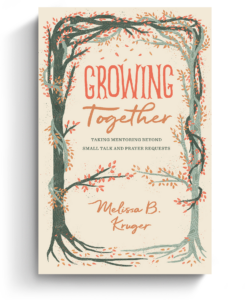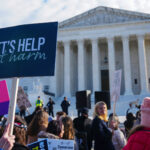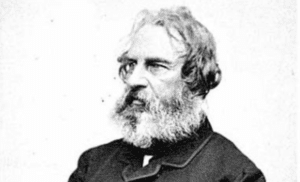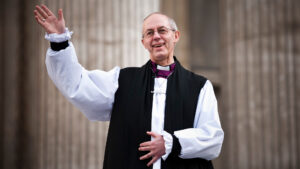This article is one of many informative articles in Joe Carter’s “9 Things You Should Know” series.
Last week the Anglican Church in North America (ACNA) held their annual provincial assembly. The ACNA is part of a growing reform movement that feels orthodox Anglicans have been “squeezed out of the Episcopal Church and Anglican Church of Canada by successive changes to historic Christian teaching and Anglican practice.” To gain a better understanding of this tradition, here are nine things you should know about Anglicanism and the Anglican Communion.
1. Anglicanism is a tradition within Christianity comprising the Church of England and churches which are historically tied to it or have similar beliefs, worship practices and church structures. With a membership estimated at around 80 million members worldwide, the Anglican faith (including both those within the Anglican Communion and Anglicans outside of it) is the third largest Christian communion in the world, after the Catholic Church and the Eastern Orthodox Churches.
2. The Anglican faith is often considered a reformed Catholicism, a hybrid between the Catholic and Protestant faiths. (For instance, one key dividing point between Anglicanism and Catholicism is the issue of absolute authority.
3. The Anglican Communion is an international association of churches consisting of the Church of England and of national and regional Anglican churches in full communion with that mother church. The status of full communion means that there is mutual agreement on essential doctrines and that full participation in the sacramental life of each church is available to all communicant Anglicans. There are also groups, such as those aligned with the Continuing Anglican movement or the Anglican realignment, whose relationship to the worldwide Anglican Communion is still being negotiated.
4. Although joined in a global communion, Anglicanism has no international juridical authority and each province is wholly self-governing. The 34 provinces, 4 United Churches, and 6 other churches of the Anglican Communion are autonomous, each with their own governing bishop and governing structure. Some take the form national churches (such as in England, Canada, and Japan), while others are a collection of nations (such as in Central Africa and South Asia) or geographical regions (such as Vanuatu and Solomon Islands). Some churches are extra provincial (for example, Bermuda aligns with Canterbury) or outside the Anglican Communion altogether.
5. The churches of the Anglican Communion are “linked by affection and common loyalty” and in communion with the See of Canterbury. The term “see” refers to the seat of a bishop, thus the “See of Canterbury” refers to the position held by the Archbishop of Canterbury, the highest ranking bishop in Canterbury, one of two ecclesiastical provinces which constitute the Church of England. The Archbishop of Canterbury is the spiritual leader and “focus of unity” for the Anglican Communion and head of the three “Instruments of Unity: The Archbishop calls the once-a-decade Lambeth Conference, chairs the meeting of Primates (i.e., chief archbishop or bishop of a province), and is President of the Anglican Consultative Council. The Archbishop of Canterbury is considered the primus inter pares, the first among equals, of the college of Primates.
6. Since there is no binding authority in the Anglican Communion (the Archbishop of Canterbury has no authority outside of his own province), the “Instruments of Unity” serve to hold the various churches and provinces together. The Lambeth Conference is a gathering of bishops, meeting every ten years, the meeting of Primates takes place every two or three years for consultation on theological, social, and international issues, and the Anglican Consultative Council brings together bishops, presbyters, deacons, lay men and women, and youth, to work on common concerns.
7. The Chicago-Lambeth Quadrilateral (also known as the Lambeth Quadrilateral or the Lambeth-Chicago Quadrilateral) encapsulates the Communion’s unifying doctrine and serves as a primary guide for ecumenical discussion with other Christian denominations. The Lambeth Conference of 1888 passed Resolution 11, which states:
That, in the opinion of this Conference, the following Articles supply a basis on which approach may be by God’s blessing made towards Home Reunion:
(a) The Holy Scriptures of the Old and New Testaments, as “containing all things necessary to salvation,” and as being the rule and ultimate standard of faith.
(b) The Apostles’ Creed, as the Baptismal Symbol; and the Nicene Creed, as the sufficient statement of the Christian faith.
(c) The two Sacraments ordained by Christ Himself—Baptism and the Supper of the Lord—ministered with unfailing use of Christ’s words of Institution, and of the elements ordained by Him.
(d) The Historic Episcopate, locally adapted in the methods of its administration to the varying needs of the nations and peoples called of God into the Unity of His Church.
8. The Book of Common Prayer is the foundational prayer book of Anglicanism. In 1549, the Archbishop of Canterbury, Thomas Cranmer, created the book by translating Latin Catholic liturgy into English, and infused the prayers with Protestant reform theology. The book became one of the great works of literature and influenced both the English language and the liturgies of other Christian traditions, particularly marriage and burial rites (e.g., “Dearly beloved: We have come together in the presence of God to witness and bless the joining together of this man and this woman in Holy Matrimony. . .”)
9. There are numerous terms that are unique to or have distinctive meanings when referring to Anglicanism, such as: bishop (a successor to one of the Twelve Apostles, who has been consecrated by other bishops), archbishop (a bishop who has additional responsibilities), communion (refers to both the Lord’s Supper and the Anglican Communion), curate (an assistant to the person in charge of a parish), deacon (the initial level of being ordained in the Anglican Church), diocese (fundamental unit of structure of the Anglican church, which contains many parishes and churches), Episcopal Church (The U.S. province of the Anglican Communion calls itself “The Episcopal Church”), parish (smallest unit of administration, usually consisting of only one church), province (administrative division of the church that is bigger than a diocese and smaller than the whole world), rector (a priest who is the leader of a self-supporting parish), and vicar (the priest in charge of a parish or mission that is supported financially from the outside).
Thanks to Alan Jacobs for his help on this post.
Involved in Women’s Ministry? Add This to Your Discipleship Tool Kit.
 We need one another. Yet we don’t always know how to develop deep relationships to help us grow in the Christian life. Younger believers benefit from the guidance and wisdom of more mature saints as their faith deepens. But too often, potential mentors lack clarity and training on how to engage in discipling those they can influence.
We need one another. Yet we don’t always know how to develop deep relationships to help us grow in the Christian life. Younger believers benefit from the guidance and wisdom of more mature saints as their faith deepens. But too often, potential mentors lack clarity and training on how to engage in discipling those they can influence.
Whether you’re longing to find a spiritual mentor or hoping to serve as a guide for someone else, we have a FREE resource to encourage and equip you. In Growing Together: Taking Mentoring Beyond Small Talk and Prayer Requests, Melissa Kruger, TGC’s vice president of discipleship programming, offers encouraging lessons to guide conversations that promote spiritual growth in both the mentee and mentor.

































